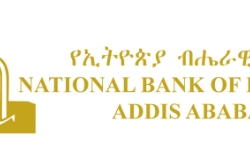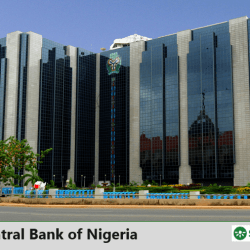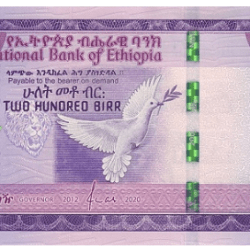The demand for robust digital infrastructure is transforming Nigeria’s financial industry, driving numerous banks to revamp their core banking platforms. Recent moves by top-tier banks like Guaranty Trust Bank, First Bank, and Sterling Bank have highlighted the enormous cost and technical challenges involved. This article provides a comprehensive look at the factors behind these core banking changes, their financial implications, and the experiences of millions of affected customers.
1. Introduction to Core Banking Changes in Nigeria
With the rapid advancement of technology, Nigerian banks are increasingly adopting new systems to modernize and streamline operations. Core banking systems manage the key functions of banking services, including transaction processing, customer account maintenance, and compliance, and have become central to banking efficiency.
2. Cost Drivers Behind Core Banking Overhauls
The financial burden of core banking changes includes upfront licensing, customization, and ongoing maintenance fees. Many Nigerian banks invest millions of dollars annually, not only in maintaining these systems but in tailoring them to the country’s specific regulatory needs and market demands. For instance, GTBank’s recent switch to the Finacle platform may cost up to ₦25 billion ($15.3 million) annually in licensing fees alone.

3. Nigerian Banks Adopting New Core Banking Platforms
Banks such as GTBank, First Bank, and Access Bank have each made significant strides in upgrading their core systems. GTBank’s recent transition to Finacle marked a substantial investment to enhance customer experience, while Sterling Bank opted for a custom-built solution, SEABaaS, aiming for lower costs and greater control over the software’s functionalities.
4. The Financial Impact of Core Banking and Technology Upgrades
In addition to core banking costs, banks are investing heavily in technology across various platforms, from digital banking channels to customer relationship management (CRM) systems. With combined technology budgets nearing ₦224.22 billion ($136 million) across the top banks, these upgrades signify a massive financial commitment but also promise to secure the banks’ competitive edge.
5. Understanding Core Banking Software: A Primer
Core banking systems streamline essential functions that include account management, loan processing, and transaction handling. Each module performs a different function, such as processing account openings, managing transactions, and supporting regulatory compliance. These core functions provide the backbone of digital banking.
6. The Complex Process of Changing Core Banking Platforms
Switching to a new core banking system involves several layers of internal coordination, change management, and executive approvals. For instance, Sterling Bank’s decision to shift from T24 to SEABaaS began in 2022, taking nearly a year of preparation, testing, and regulatory approvals before implementation.
7. The Data Migration Challenge in Core Banking Upgrades
Data migration is crucial in transitioning to a new core system. Migrating data on millions of customer accounts and transactions is time-intensive and poses risks of errors that could disrupt services. To mitigate these risks, data undergoes cleaning, reformatting, and rigorous testing before being moved into the new system.
8. Customer Experience and Downtime Management
As core banking changes often result in temporary disruptions, Nigerian customers have faced challenges like limited access to their accounts and reduced online banking functionality. Extended downtimes may harm customer trust, but banks attempt to reduce disruptions through transparent communication and timely updates.
9. Rebuilding and Sustaining Customer Trust Post-Migration
Restoring customer trust is essential after service interruptions caused by core banking changes. Nigerian banks are adopting customer-centric strategies to rebuild confidence by issuing frequent communications and offering incentives for loyal customers affected by service delays.
10. Tier-1 vs. Tier-2 Banks: Divergent Approaches to Core Banking
While tier-1 banks like GTBank and Access Bank can afford hefty tech investments, tier-2 banks often seek more cost-effective alternatives. Sterling Bank, for example, developed SEABaaS as a lower-cost core banking solution and plans to license it to other banks, potentially creating an additional revenue stream.
11. Why Customization Is Key for Nigerian Banks’ Core Banking Systems
A fully customized system allows banks to add unique features tailored to Nigeria’s banking environment, such as specialized risk assessment modules or transaction reporting functions. Customization also helps banks scale faster while meeting regulatory compliance requirements specific to Nigeria.
12. Strategic Considerations for Future Core Banking Upgrades
Future core banking investments will focus on scalability, security, and regulatory compliance. Banks must consider platform flexibility to integrate future technologies and compliance requirements while managing cost-effectiveness.
13. Emerging Trends in Core Banking Technology
New technologies, including cloud computing, AI, and machine learning, are shaping the future of core banking systems. Cloud-based platforms allow banks to scale quickly and integrate enhanced security measures, which are essential in the Nigerian market where financial data security is paramount.
14. Regulatory Considerations in Core Banking Upgrades
Nigerian banks must comply with the Central Bank of Nigeria (CBN) guidelines for data handling, transaction transparency, and anti-fraud measures. These regulations significantly impact banks’ core banking choices, especially when migrating sensitive customer data.
15. Future Outlook for Core Banking in Nigeria
With continuing technological advancements and increased competition, Nigerian banks will likely continue to invest in digital transformation. The focus will increasingly shift towards enhancing financial inclusion and ensuring accessible banking for all demographics.
FAQs
1. Why are Nigerian banks changing their core banking applications?
To enhance efficiency, meet regulatory standards, and improve customer experience, many Nigerian banks are upgrading or switching their core banking platforms.
2. What are the biggest challenges in switching core banking systems?
The primary challenges include data migration, maintaining operational continuity, and managing high costs associated with new licensing and customization.
3. How does core banking software affect customers?
Core banking software affects everything from transaction processing speed to account management, influencing the overall customer experience, especially in digital banking.
4. Why is data migration crucial in core banking transitions?
Data migration ensures that all existing customer information and transaction histories are accurately transferred to the new system, a delicate process to prevent errors.
5. Why are core banking systems so costly?
Licensing, customization, and compliance needs drive up costs, as these systems require ongoing maintenance and upgrades to stay secure and efficient.
6. What should customers expect during core banking changes?
Customers might experience temporary service disruptions, but banks typically issue notifications and updates to minimize customer inconvenience.
















